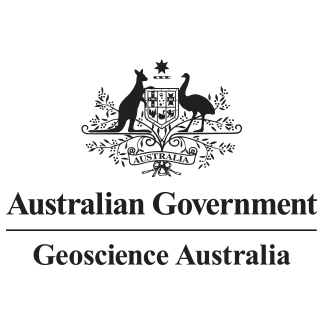Brief description
Steelmaking value chains are economically important to Australia, but the need to decarbonize traditional steel-making processes could disrupt existing supply lines. Hydrogen-based iron and steel production offers one pathway for reducing the carbon intensity of steel. Here, we present maps assessing the costs of hydrogen-based direct reduction of iron oxides (to produce hot briquetted iron), optionally coupled with steelmaking in an electric arc furnace (i.e. the H2-DRI-EAF value chain). Developed as part of the Exploring for the Future program and in collaboration with Monash University, these models build off the functionality of the Green Steel Economic Fairways Mapper (beta release), with additional enhancements to the modelling algorithm to reflect constant furnace operation, the incorporation of costings to transport the produced hot briquetted iron or steel to domestic ports, and the optimisation of facility capacities. The capacity of facilities (including solar and wind generation, proton exchange membrane [PEM] electolysis, battery storage, and hydrogen storage tanks) are determined by the 1 Mtpa production target and the local availability of renewable energy resources, as modelled according to 2019 data sourced from the Renewables.Ninja (https://www.renewables.ninja/; Pfenninger & Staffell, 2016; Staffell & Pfenninger, 2016). The high-resolution (approximately 5.5 km pixels) maps reflect our preferred technology cost assumptions (see Wang et al., 2023) for the year 2025. Iron concentrate feedstocks are assumed to cost AU$150 per tonne, reflecting approximate costs for 65 % Fe pellets as derived from magnetite ores. Conversions to USD assume US$1.00 = AU$0.73.
Geoscience Australia's Exploring for the Future program provides precompetitive information to inform decision-making by government, community and industry on the sustainable development of Australia's mineral, energy and groundwater resources. By gathering, analysing and interpreting new and existing precompetitive geoscience data and knowledge, we are building a national picture of Australia's geology and resource potential. This leads to a strong economy, resilient society and sustainable environment for the benefit of all Australians. This includes supporting Australia's transition to a low emissions economy, strong resources and agriculture sectors, and economic opportunities and social benefits for Australia's regional and remote communities. The Exploring for the Future program, which commenced in 2016, is an eight year, $225m investment by the Australian Government.
Lineage
Maintenance and Update Frequency: notPlanned
Statement:
Bespoke algorithms have been created for the Green Steel Economic Fairways Mapper to optimise iron- and steel-making system capacities with respect to minimising costs according to the availability of renewable energy at a given location. Renewable energy availability is modelled on an hour-by-hour basis reflecting conditions from the year 2019, as available from the Renewables.Ninja website. Iron concentrate feedstocks are assumed to cost AU$150 per tonne, reflecting approximate costs for 65 % Fe pellets as derived from magnetite ores. Conversions to USD assume US$1.00 = AU$0.73.
Notes
Purpose
Rendered maps and geo-referenced rasters covering the Australian continent. The products summarise cost estimates for the production of hot briquetted iron and/or steel, levelised by the volume of production. The products provide an insight into the resource development potential for a specific steelmaking value chain technology that has been proposed as a means of significantly lowering the carbon intensity of steel production.
![]()




